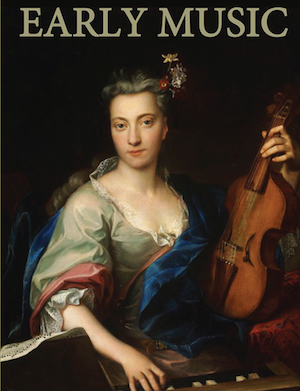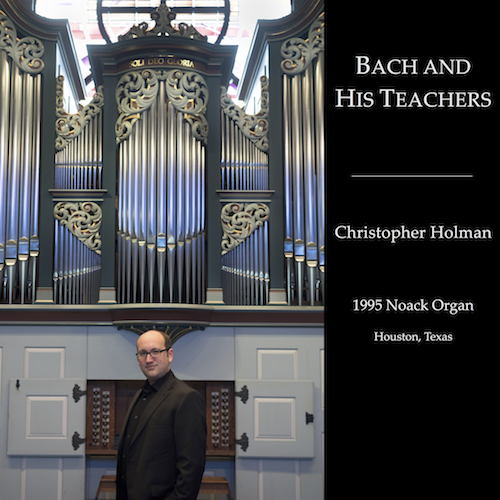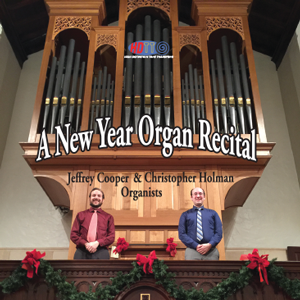Publications & Recordings
Paper: "Swiss Renaissance Keyboard Music"
Westfield Center for Historical Keyboard Studies: Keyboard Perspectives 12.
ReadThe majority of early sixteenth-century keyboard tablatures from Switzerland consist of relatively short, three-voice pieces based on a cantus firmus in the tenor. Many of the same motet intabulations appear across multiple sources, yet the amount of ornamentation between collections varies drastically; some feature lavish filigree, while others look like a direct transcription of a vocal motet. These highly contrasting approaches are most obvious when comparing early keyboard collections compiled by the Swiss Paulomimes — students of Paul Hofhaimer — particularly Codex Amerbach (CH-Bu, F.X.21), the St. Gallen Organ Book (CH-SGs, Cod. 530), and the Tablature of Clemens Hör (CH-Zz, Z. IX. 301). These manuscripts share a number of intabulations of the same motet which are nearly identical except in the amount of ornamentation. By analyzing versions of the same piece in different Swiss manuscripts, basic patterns and figures of ornamentation emerge, which can be applied to unornamented pieces in modern performances.
The research which contributed to this paper was funded by the Frank Huntington Beebe Fund.

Paper: "Rhythm and metre in French Classical plainchant"
Oxford University Press: Early Music 45, Issue 4, 657–664.
ReadA substantial portion of the French Classical organ literature consists of relatively short pieces intended for alternatim performance. Yet today, performers routinely present the organ versets only without any singing in between; furthermore, when audiences are fortunate enough to hear plainsong, the performance practice often follows the Solesmes school of chanting—quick, unmetred and unaccompanied—which makes chant versets last about a tenth of the time of organ versets.
This article will investigate several French Classical documents that can assist organists and choirmasters in presenting historically informed performances of alternatim works, with particular focus on rhythm. Pierre-Benoît de Jumilhac’s La science et la pratique du plain-chant (1673) provides valuable insight into the normal rhythmic values of neumes used in period chant books. A. Hardy’s Méthode de serpent (1810) instructs serpent players in how to improvise accompaniment to plainchant, even converting chant melodies that were previously only presented in neumes into modern notation. Together, these and other documents throughout the French Classical period and beyond indicate that chant performance was, in fact, practically the opposite of Solesmes aesthetics, which also creates a much more reasonable ratio of chant to organ verset lengths. At the end of this article, I will present the application of Jumilhac’s ideas about rhythmicization with Hardy’s examples in the form of two reconstructions of plainchant hymns that can be sung in a regular musical metre.

Bach and His Teachers
Recording of a recital given for Bach Society Houston on the 1995 Noack Organ at Christ the King Lutheran Church in Houston, Texas.
Available hereTrack listing:
1. Bach: Fantasia in G Major, BWV 572
2. Sweelinck: Onder een linde groen
3. Couperin: Offertoire, Messe pour les paroisses
4. Frescobaldi: Toccata quarta per la levatione
5–10. Buxtehude: Te Deum, BuxWV 218
11–12. Bach: Prelude and Fugue in A Major, BWV 536
13. Bach: Erhalt uns, Herr, bei deinem Wort, BWV 1103
14. Bach: Ach, Gott und Herr, BWV 714
15. Bach: Herzlich Lieb hab ich dich, O Herr, BWV 1115
16–17. Bach: Prelude and Fugue in D Major, BWV 532

A New Year Organ Recital
Recording of recital by Christopher Holman and Jeffrey Cooper on the 2015 Martin Pasi organ at First Evangelical Lutheran Church in Houston, Texas.
Available hereHolman plays on the following tracks:
1. Scheidemann: Praeludium in G Major, WV 73
2. Buxtehude: Gelobet seist du, Herr Jesu Christ, BuxWV 189
3. Buxtehude: Puer natus in Bethlehem, BuxWV 197
6. Tunder: Canzona in G Major
9–10. Bach: Prelude and Fugue in C Major, BWV 547
11. Bach: Das alte Jahr vergangen ist, BWV 614
12. Bach: Puer natus in Bethlehem, BWV 603
13. Bach: Gelobet seist du, Herr Jesu Christ, BWV 604
14. Bach: Vom Himmel hoch, BWV 606
15. Bach: Alle Menschen müssen sterben, BWV 643